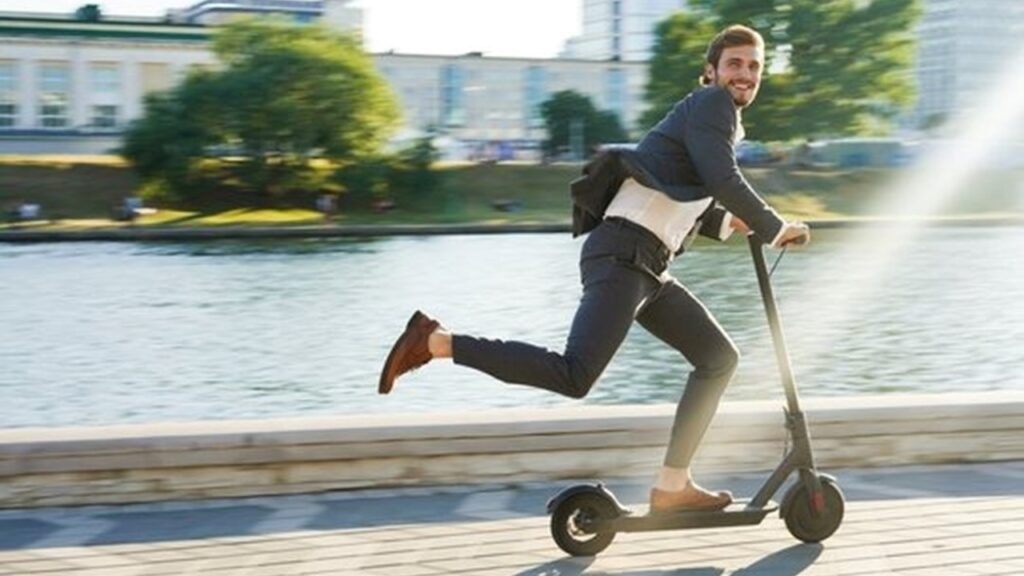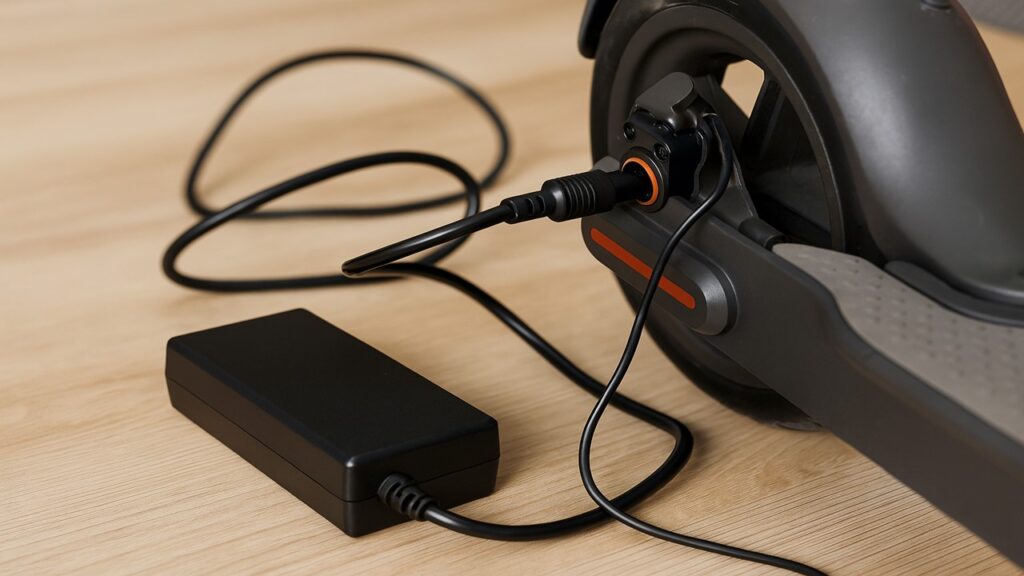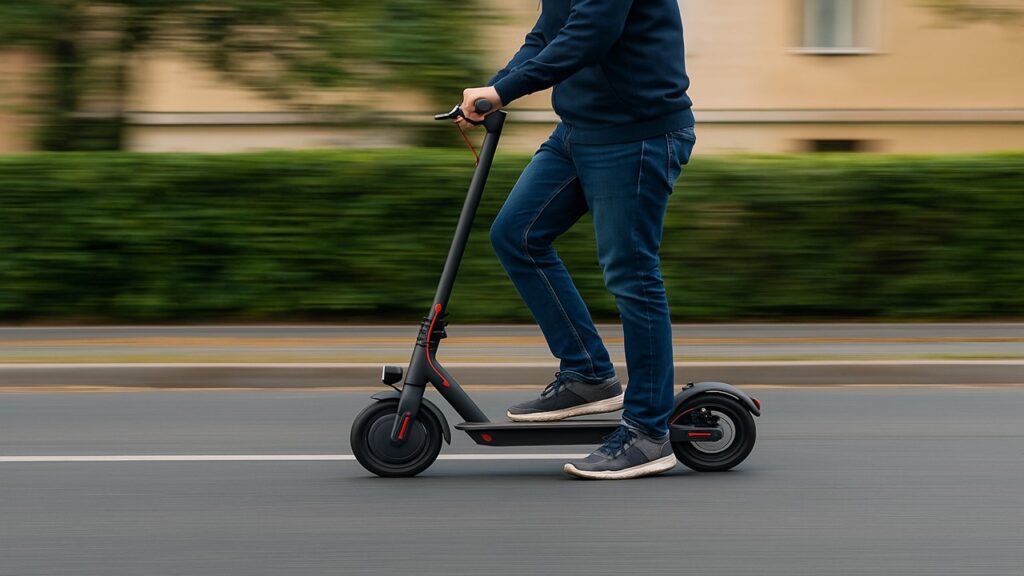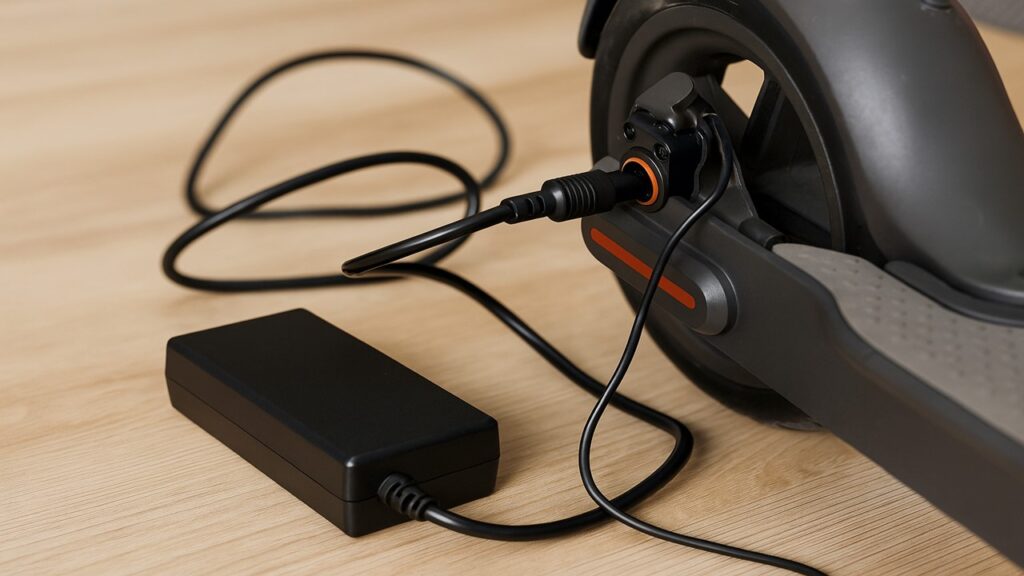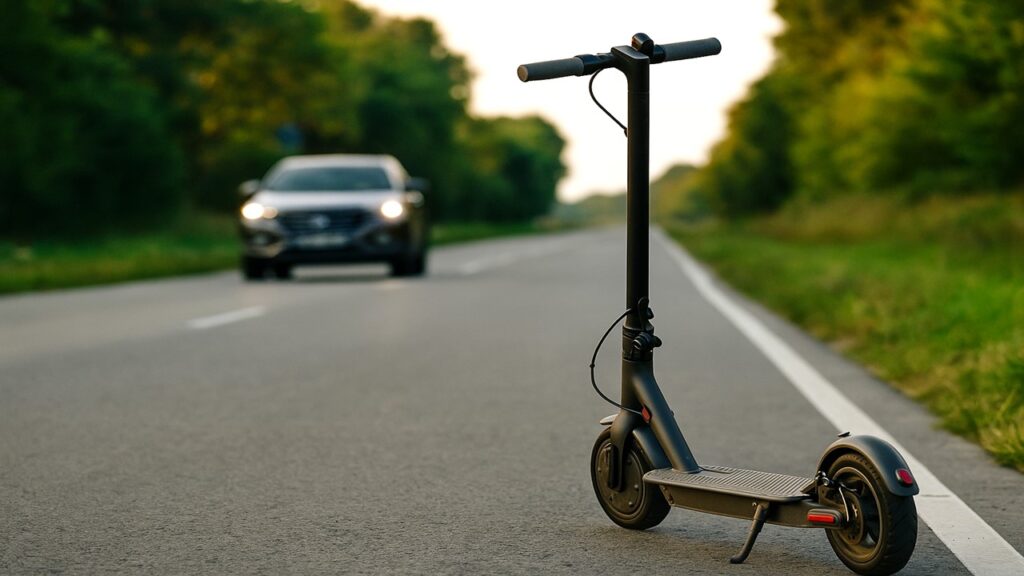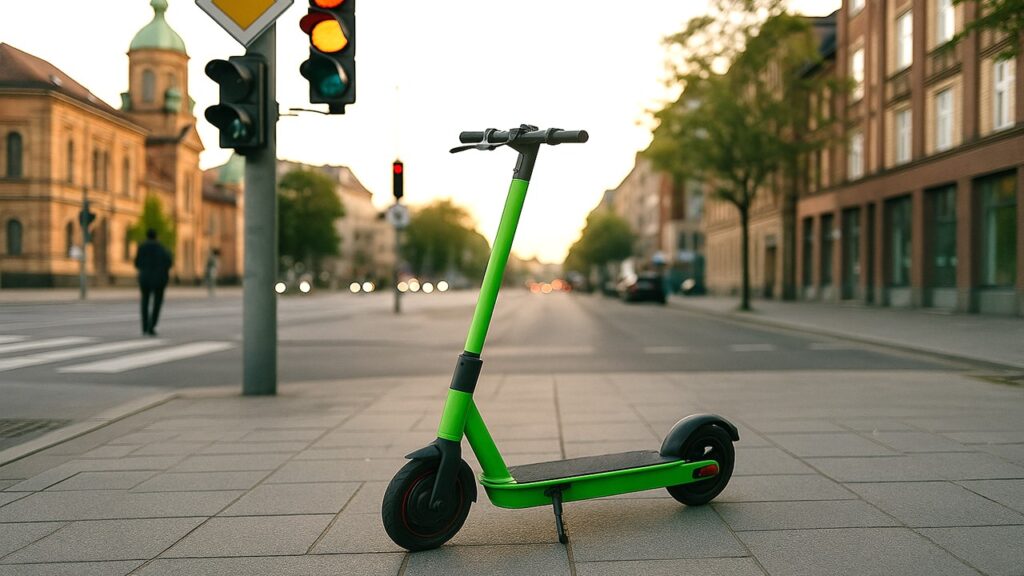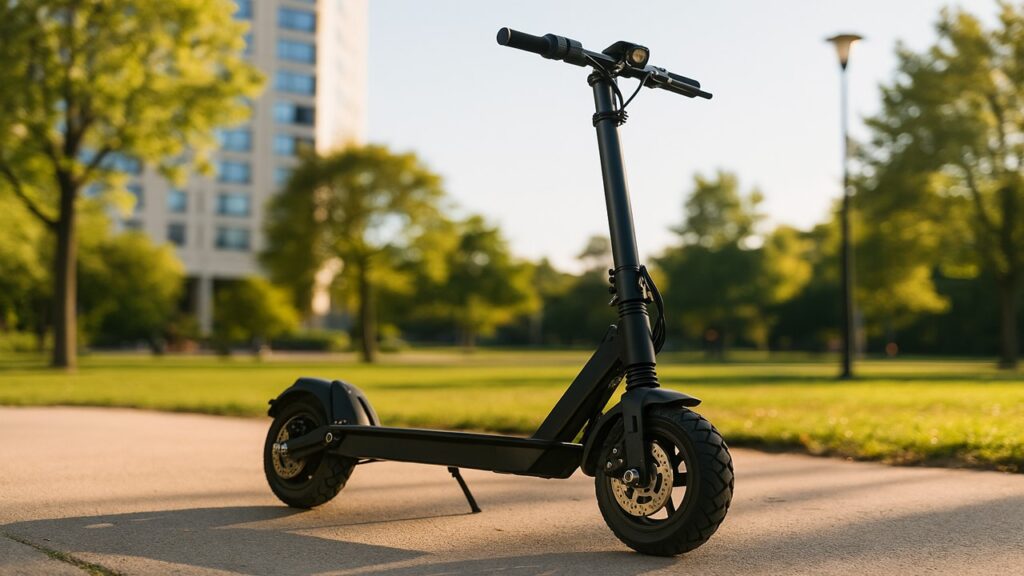
Electric scooters typically travel between 15 and 25 mph, though high-performance models can reach 40 mph or more. The actual speed depends on the scooter’s design, motor power, and external factors like rider weight and terrain.
Key Summary:
- Most electric scooters average 15–25 mph, which is fast enough for everyday commuting.
- High-performance models can reach 40–60+ mph, offering motorcycle-like speed for experienced riders.
- Actual speed depends on factors like motor size, battery power, rider weight, terrain, and riding mode.
- Local regulations often cap scooters at 15–20 mph, so it’s important to check laws in your area.
How Fast Can an Electric Scooter Go?
Most electric scooters travel between 15 and 25 mph (24–40 km/h), which is fast enough for commuting in cities and neighborhoods. High-performance scooters, however, can reach 40–60+ mph (64–96 km/h), putting them in the same speed range as small motorcycles.
The actual speed depends on several factors, including motor wattage, battery voltage, rider weight, terrain, and even built-in software limiters.
For example, a lightweight rider on smooth pavement with a 1000W scooter may easily hit 30 mph, while the same scooter carrying more weight uphill could struggle to maintain 20 mph.
This is why manufacturers publish “maximum speeds,” but real-world performance varies. Local laws also matter, since many regions cap scooters at 15–20 mph regardless of their capabilities.
Typical Speed Ranges of Electric Scooters
Most electric scooters fall within the 15–25 mph range, which is fast enough for daily commuting while staying safe and manageable. However, higher-end and specialized scooters can go far faster.
- Entry-level scooters: Built for short commutes, these usually reach 10–20 mph, offering portability and ease of use.
- Mid-range scooters: Designed for longer commutes, they reach 20–30 mph and balance speed with battery efficiency.
- High-performance scooters: Dual-motor setups and stronger batteries push these to 40–60+ mph, but they are heavier and less portable.
- Children’s and teen scooters: Capped around 10–15 mph for safety, often enforced by built-in limiters.
Key Factors That Affect Scooter Speed
Electric scooter speed depends on more than just motor size. Battery health, rider weight, tire condition, and road surfaces all influence how fast a scooter actually goes in real-world conditions.
Motor Power and Torque
Motor output measured in watts sets the baseline for top speed. Small 250W motors usually peak around 15 mph, while dual 1000W or higher setups can push scooters past 40 mph.
Stronger torque improves acceleration and makes hill climbs smoother, which directly affects how quickly riders can reach and maintain higher speeds.
Battery Capacity and Voltage
Battery voltage and storage capacity shape both speed and endurance. Fully charged, high-voltage packs supply steady power that lets scooters hit their maximum performance.
As charge drops, so does output, meaning reduced acceleration and lower sustained speeds. Larger capacity batteries (Ah/Wh) also help maintain consistent speed on longer rides.
Rider Weight and Load
Heavier riders or added baggage slow scooters down by increasing demand on the motor. Staying within weight limits keeps acceleration responsive and top speeds closer to factory ratings.
A lighter rider often experiences faster takeoff and a smoother ride, even on lower-powered models.
Read more: Best electric scooters with seats
Tires and Terrain
Tire design influences how quickly scooters roll. Large, well-inflated pneumatic tires reduce resistance and allow higher cruising speeds. Off-road or knobby tires trade some speed for traction.
Road conditions matter too: smooth pavement supports max speed, while gravel, hills, or uneven surfaces naturally cut performance.
Speed Modes and Limiters
Scooters often come with multiple riding modes. Eco mode caps performance to save battery, while sport mode unlocks maximum acceleration and top speed.
Many commuter scooters include software speed limiters to comply with local laws, typically restricting max speed to around 15–20 mph. Removing these caps may be possible, but it can void warranties and break legal requirements.
Motor Power vs. Scooter Speed
One of the clearest ways to understand electric scooter performance is by looking at motor wattage. More power usually means faster acceleration and a higher top speed, though the best choice depends on how and where you ride.
| Motor Power (Watts) | Typical Top Speed (mph) | Best Suited For |
| 250W and below | 10–15 mph | Kids, beginners, short commutes |
| 350W–500W | 15–20 mph | Daily commuting, city riding |
| 600W–1000W | 20–30 mph | Longer commutes, moderate hills |
| 1500W–3000W | 30–45 mph | Performance riders, off-road use |
| 3000W+ | 50–60+ mph | Extreme performance, experienced riders only |
How Do Local Laws Affect Scooter Speed?
Scooter laws vary widely and often determine how fast you can legally ride, regardless of your scooter’s capabilities. In the United States, many states cap scooter speeds at 15–20 mph, though some, like Michigan and Missouri, allow higher limits. Cities may impose stricter caps than the state level, especially in dense urban areas.
In the UK and much of Europe, scooters are generally restricted to 15.5 mph (25 km/h). Rental companies also program software limiters to comply with local rules, so even if a scooter could go faster, the rider won’t be able to exceed the cap.
Because laws change by region, it’s important to check your local regulations before riding, especially if you’re considering a high-speed scooter.
Safety Considerations at Higher Speeds
Speed makes scooters more exciting, but it also increases risks. At 20 mph, a fall can cause serious injury, and at 40+ mph, the danger is comparable to riding a motorcycle.
Protective gear is essential. A helmet should be non-negotiable, and gloves, knee, and elbow pads add extra protection. Scooters capable of high speeds should also have strong braking systems, preferably hydraulic or disc brakes, to stop safely.
Finally, match your speed to your environment and skill level. High-performance scooters may handle 50 mph, but that doesn’t mean you should ride them that fast on city streets.
Controlled environments and empty paths are the only places to test maximum speed responsibly.
Final Words
Electric scooters can travel as slow as 10 mph for beginner models or as fast as 60 mph and beyond for advanced machines. Most commuters, however, find the 15–25 mph range both practical and safe for daily use.
The right scooter speed depends on your needs, skill level, and local laws. While high-performance models are exciting, most riders will benefit more from balanced scooters designed for reliable, everyday commuting. Always match your scooter choice to your riding environment and prioritize safety above all else.
FAQs
What is the average speed of an electric scooter?
Most electric scooters average between 15 and 25 mph, which is suitable for urban commuting. This range balances safety, portability, and efficiency, making it the standard for everyday riders.
How fast can a 500W or 1000W scooter go?
A 500W scooter typically reaches 18–25 mph, while a 1000W scooter can hit 30 mph or more, depending on terrain and rider weight. Higher wattage provides faster acceleration and better hill-climbing ability.
Is 15 mph fast enough for commuting?
Yes, 15 mph is generally fast enough for city commuting and short trips. It allows riders to travel quicker than walking or cycling without exceeding most local scooter speed limits.
Can speed limiters be removed safely?
Some scooters have removable or adjustable speed limiters, but doing so can void the warranty and may violate local laws. It can also reduce safety since the scooter might not be designed to handle higher speeds reliably.

Max Volt is an electric scooter and e-bike enthusiast who rides daily and knows the nuts and bolts of every model. With years of hands-on repair experience and real-world testing, Max shares practical reviews, maintenance tips, and buyer guides to help riders choose the right gear with confidence. His mission is to make electric commuting safer, smarter, and more enjoyable for everyone.




